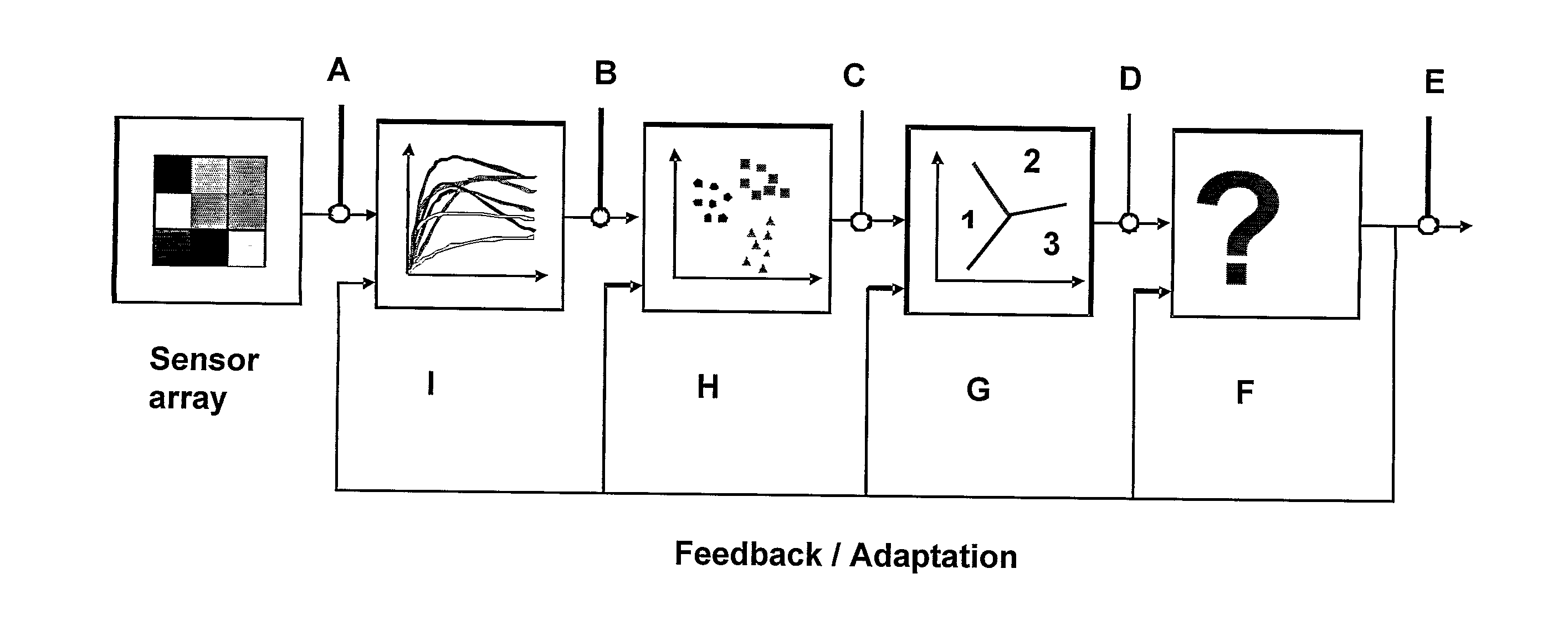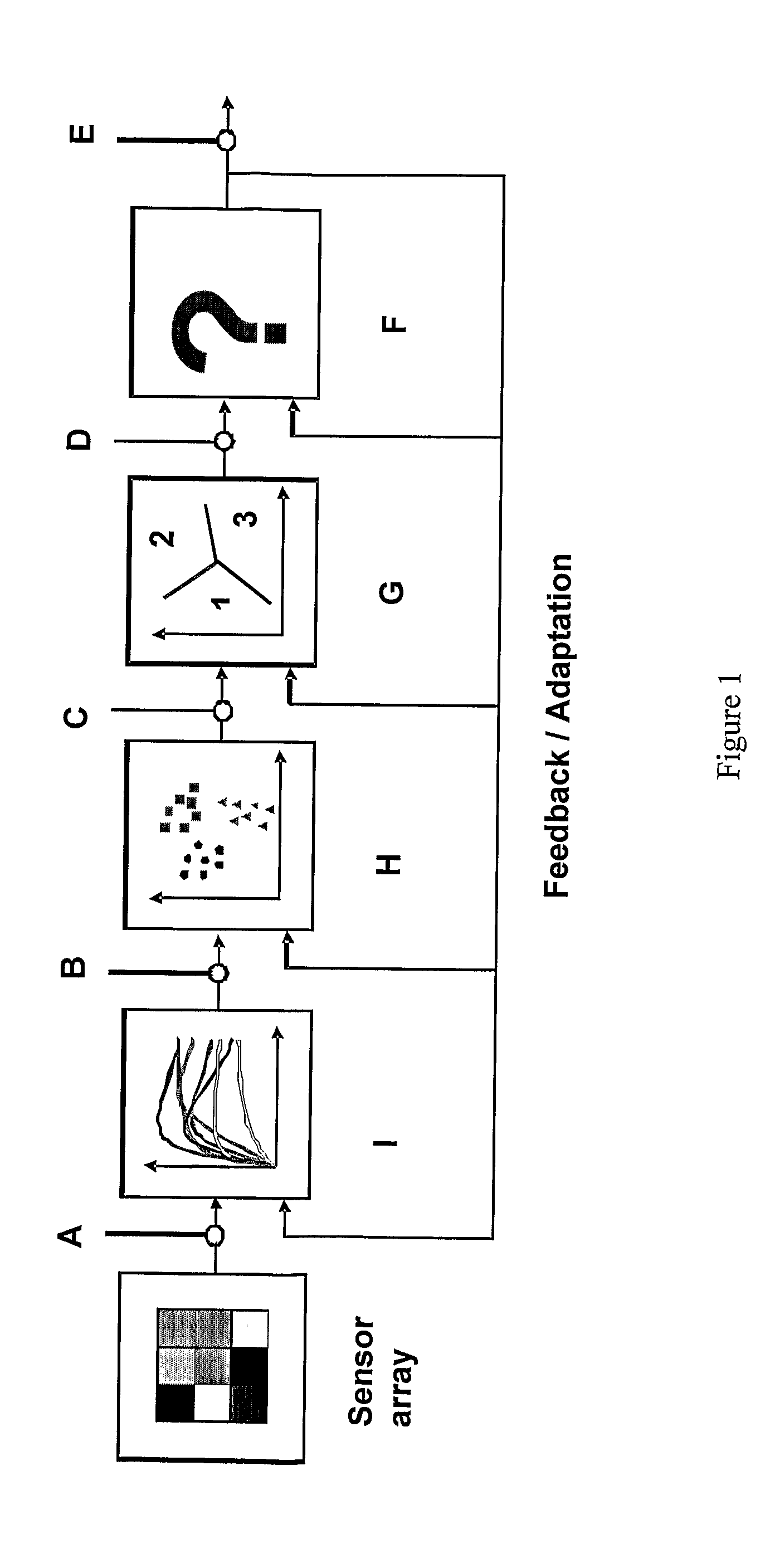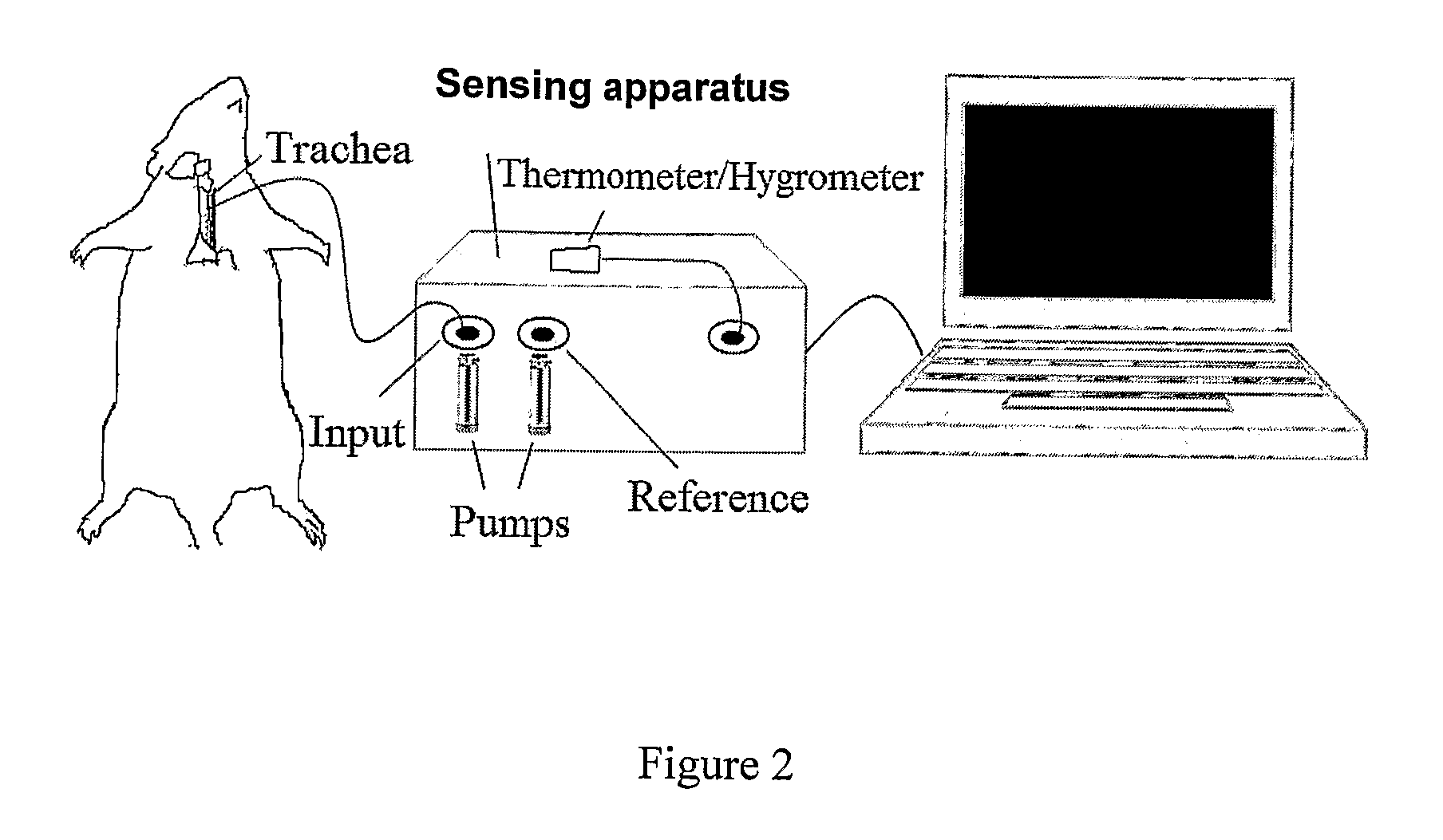Apparatus and methods for diagnosing renal disorders
a technology of renal failure and appendix, which is applied in combinational chemistry, withdrawing sample devices, chemical libraries, etc., can solve the problems of progressive scarring within the kidney, shrinkage of the kidney, and kidney failure that affects millions of people worldwide, and achieves high accuracy
- Summary
- Abstract
- Description
- Claims
- Application Information
AI Technical Summary
Benefits of technology
Problems solved by technology
Method used
Image
Examples
example 1
Rat Model for Chronic Renal Failure (CRF)
[0137]The experiments were carried out on Sprague Dawley rats weighing between 290 to 330 g (Harlan Laboratories Ltd., Jerusalem, Israel). The animals were kept in a temperature-controlled room, and were fed with standard rat chow containing 0.5% NaCl and tap water ad libitum. All experiments were performed according to the guidelines of the Technion Committee for Supervision of Animal Experiments (Haifa, Israel).
[0138]The surgical procedures for the induction of chronic renal failure of different severities were performed according to known procedures (Mashiach et al., Nephron, 80, 458, 1998). In particular, animals were anesthetized by intraperitoneal injection of a Nembutal (40 mg / kg; ip) and placed on a temperature-regulated table (37° C.) to maintain body temperature. A protocol for bilateral nephrectomy which mimics clinical ESRD (CRF stage V) was then performed. Using this protocol, both right and left kidneys were removed and the anim...
example 2
GC-MS Analysis of Breath Samples (Rat Model of CRF vs. Healthy)
[0141]Breath samples that were collected from “healthy” and “diseased” rats were analyzed using GC-MS combined with solid phase micro-extraction (SPME). The SPME system was used for pre-concentrating the VOCs from breath samples. A manual SPME holder with an extraction fiber of 100 μm Polydimethylsiloxane (PDMS), 65 μm Polydimethylsiloxane-Divinylbenzene (PDMS / DVB), or 75 μm Polydimethylsiloxane-Carboxen (PDMS / Carboxen), all purchased from Sigma-Aldrich was inserted into a Mylar bag. Approximately 100-500 cm3 of each breath sample were concentrated using the SPME system for 2 hours and subsequently delivered to the GC-MS using a manual SPME holder. The extracted fiber in the manual SPME holder was inserted into the GC injector operated using the splitless model. The oven temperature profile was 60° C. and 2 minutes. A capillary column HP-5MS 5% Phenyl Methyl Siloxane (30 m length, 250 μm diameter, 0.25 μm thickness) was ...
example 3
Comparative Studies: Analysis of Exhaled vs. Simulated Breath Samples
[0143]Exhaled breath samples were analyzed using an array of 32 organic compounds / single walled carbon nanotube composite sensors, in conjugation with acquisition system, and a processor. The organic compounds that were used in this set of experiments were: propyl gallate (C10H12O5), anthracene (C14H10), tetracosanoic acid (C24H48O2), tricosane (C23H48), 3-methyl-2-phenyl valeric acid (C12H16O2), tris(hydroxymethyl)nitro-methane (C4H9NO5), tetracosane (C24H50)+dioctyl phthalate((C24H38O4) (3:1 w / w), tetracosanoic acid (C24H48P2)+dioctyl phthalate((C24H38O4) (3:1 w / w), 1.2.5.6.9.10-hexabrormo-cyclododecane (C12H18Br6)+dioctyl phthalate(C24H38O4) (3:1 w / w), pentadecane (C15H32)+dioctyl phthalate (C24H38O4) (3:1 w / w), poly(4-vinylpyridine), poly(ethylene oxide), quinacrine dihydrochloride dehydrate, polystyrene, lauric acid / dioctyl phthalate, tetracosane / dioctyl phthalate, poly(methyl vinyl ether-co-maleic anhydride),...
PUM
 Login to View More
Login to View More Abstract
Description
Claims
Application Information
 Login to View More
Login to View More - R&D
- Intellectual Property
- Life Sciences
- Materials
- Tech Scout
- Unparalleled Data Quality
- Higher Quality Content
- 60% Fewer Hallucinations
Browse by: Latest US Patents, China's latest patents, Technical Efficacy Thesaurus, Application Domain, Technology Topic, Popular Technical Reports.
© 2025 PatSnap. All rights reserved.Legal|Privacy policy|Modern Slavery Act Transparency Statement|Sitemap|About US| Contact US: help@patsnap.com



